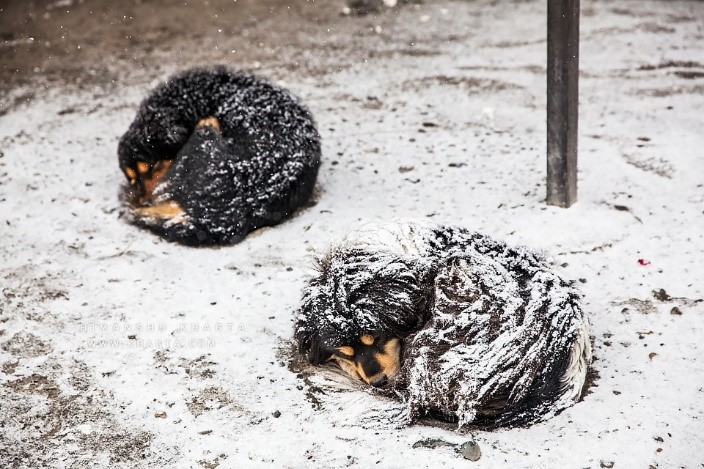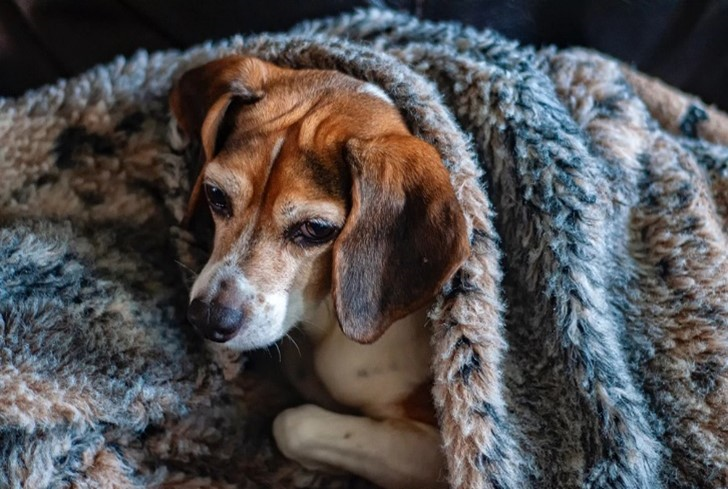Taking care of community animals is our social responsibility, especially during the winter season when the weather is particularly rough. Community animals include all animals that we see around us daily like cows, dogs, squirrels, cats, birds, etc.
During the winter season, the temperature can dip as low as 0⁰C in many towns and cities especially across North India turning these animals, who are already susceptible to pre-existing health problems, more vulnerable to various diseases and disabilities. Not all animals have fur-coated bodies that can protect them from the freezing cold.

Cold weather may worsen some medical conditions like arthritis (chronic inflammation and pain in the joints) and cause health problems like hypothermia and Kennel Cough which can be easily confused with COVID, leading to inhumane behaviour towards them.
In the first of our series on Taking Care of Community Animals During the Winter Season, we are taking up the topic of Hypothermia in dogs.

Hypothermia in Dogs
Hypothermia in dogs is a situation when there is an intense lowering of their body temperature. It happens when they are exposed to very cold or frigid temperatures for too long, or if they have wet fur in the cold and windy environments.
As a result, their body temperature falls drastically, causing the heart rate and breathing to slow down. The consequences of sustained and severe hypothermia may include neurological problems like coma, heart ailments, staggered breathing, frostbite, and eventually, death.
In severity scale and based on the body temperature of the dog, hypothermia can range from mild (90° to 99° F) to moderate (82° to 90° F) to severe (82° F). Some of the key pointers to remember are as follows:
- Symptoms: Shivering, Exhaustion, or feeling very tired, inactivity, confusion, etc.
- Causes: Extended exposure to cold weather and icy conditions or shock due to a traumatic incident or fright.
- Prevention: Keeping them warm and limiting the exposure time to cold.
- Treatment: Returning to a warm environment and wrapping the animal with a blanket until the shivering stops. Warm water bottles placed around the animals are a safe heat source.
Incredibly old and small dogs and those with short hair can be most vulnerable to hypothermia. In northern India, since we have many of them roaming around as strays it becomes imperative for us to take care of them.
Some of the interesting items that could keep our strays warm during winters are dog houses, durries made of jute sacks or for that matter any old rugs that one may want to discard may be given to these street dogs.
In case you came across more such interesting items, please write to us in the comments below.

Author: Anshul Raj
Anshul Raj is an Economics student at Delhi University trying to make a social impact. He appreciates activities in natural settings and is a fervent believer in animal welfare and environmental conservation.